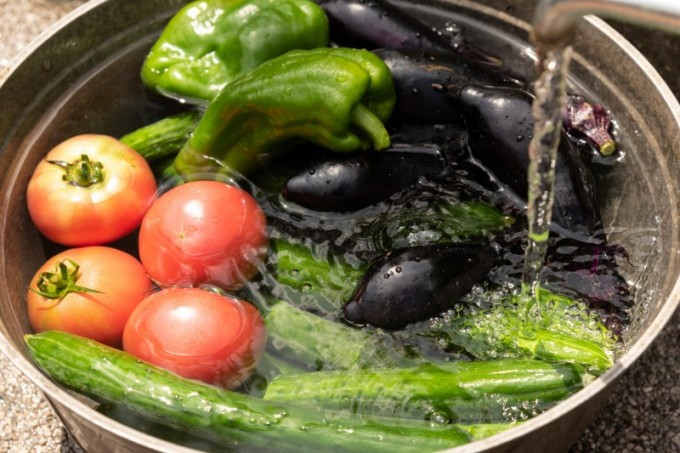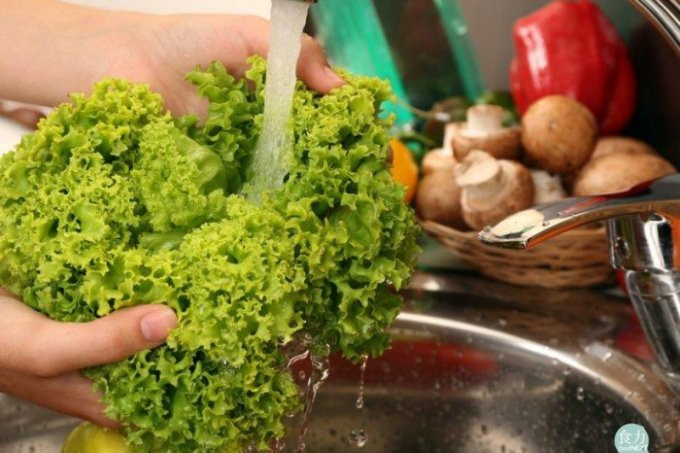Many people use baking soda to remove pesticides from vegetables, but there are many other ways you can apply.

In the book "Healthy Kitchen", organic diet expert Wang Mingyong of the University of Science and Technology Beijing, China shares 8 methods to wash fruits and vegetables containing pesticides.
Rinse with water
Pesticides are divided into fat-soluble and water-soluble. So wash fruits and vegetables under running water at least three to five times, then soak in clean water for 10-15 minutes, and finally wash again.
Rinse with warm water
Leafy green vegetables are most likely to retain nitrate nitrogen (NO3). Studies have found that soaking half a kilogram of leafy greens in 5-8 liters of warm water for 10 minutes (water temperature around 42-50°C) can remove more than 50% of the nitrate.
Peel
The surface of fruits and vegetables has a waxy layer that easily absorbs pesticides, so it is important to peel them before eating. Most pesticides remain on the surface of fruits and vegetables, especially the stems and hollows. Peeling will reduce the risk of exposure to pesticides.
Alkaline cleaning
In addition to the type of pesticide that can be cleaned with water, there is a more "stubborn" type that only dissolves in fat. In this case, you should use baking soda to clean.
You just need to add a small amount of baking soda to water in a ratio of 1:20, soak fruits and vegetables for 15 minutes. Then scrub, pour out the water and rinse with clean water.
Using lye powder or lye stone is more effective than baking soda. Just add a small spoon of lye powder to water, soak for 5-10 minutes, then rinse.
Store at room temperature
For some fruits and vegetables, pesticides will evaporate into the air after a certain period of storage, reducing the amount of pesticide residue. For example, onions, pumpkins, carrots, and papaya can be kept at room temperature for two to three days, but should not be placed directly in the refrigerator.
Sunbathing
According to research, when vegetables and fruits are exposed to sunlight for 5 minutes, 60% of the remaining organochlorine pesticides will be lost. When carrots are exposed to sunlight, ultraviolet rays can decompose the chemical structure of pesticides, reducing the initial toxicity. The higher the temperature, the faster the pesticides evaporate.

Blanching
In addition to its bactericidal effect, high temperatures also evaporate and decompose most pesticides. Especially for plants that are easy to spray with pesticides all over their body, it is best to cut them into small pieces and blanch them for about a minute after washing to completely dissolve the pesticides. Remember to discard this blanching water and open the lid to let the pesticides evaporate with the steam.
Enzyme food wash
Wash with an environmentally friendly enzyme food cleaner or natural vegetable wash. Rinse vegetables once or twice with water to remove germs, insect eggs and residual pesticides on vegetables.
In conclusion, fruits and vegetables are an important part of a healthy diet, but the problem of pesticide residues cannot be ignored. Using baking soda and other ways to wash fruits and vegetables is very effective in helping us stay away from the threat of pesticide residues and maintain healthy eating habits.
TN (according to VnE)